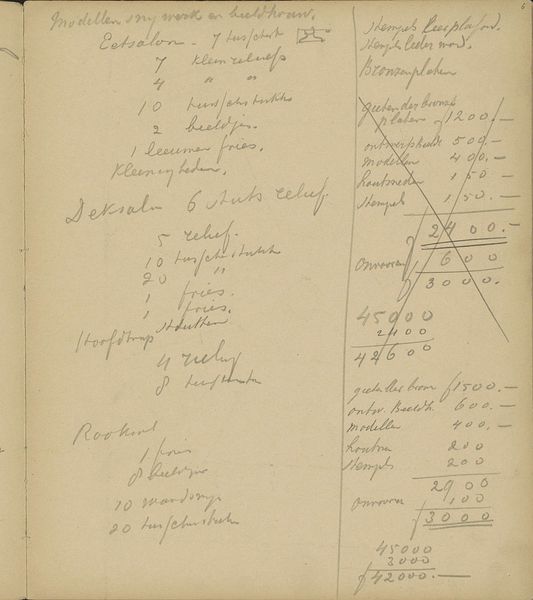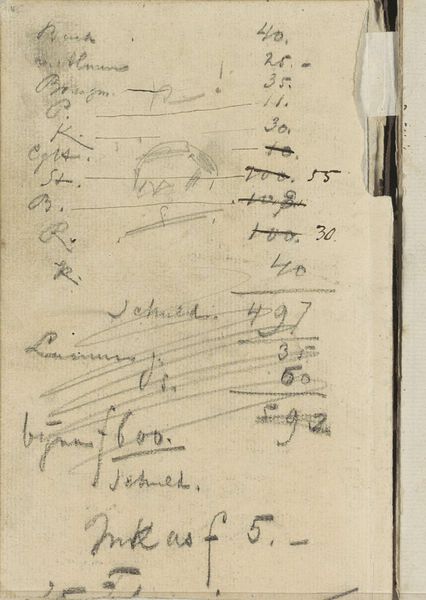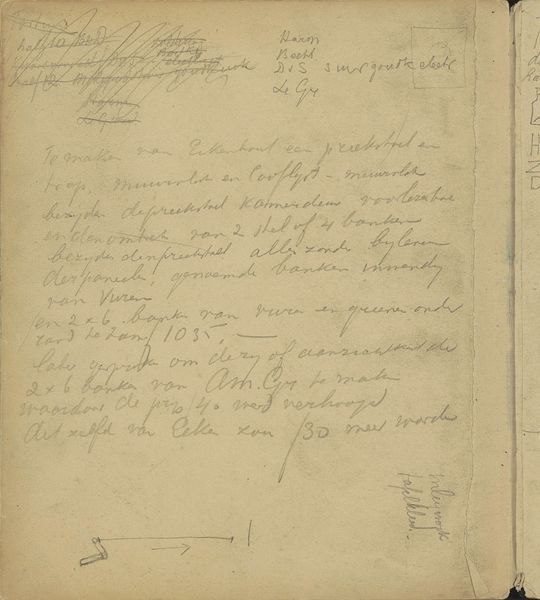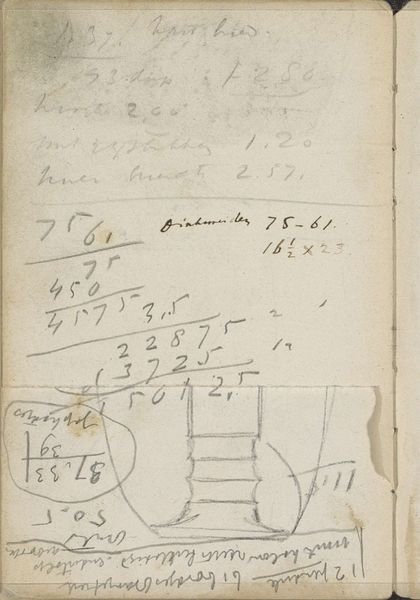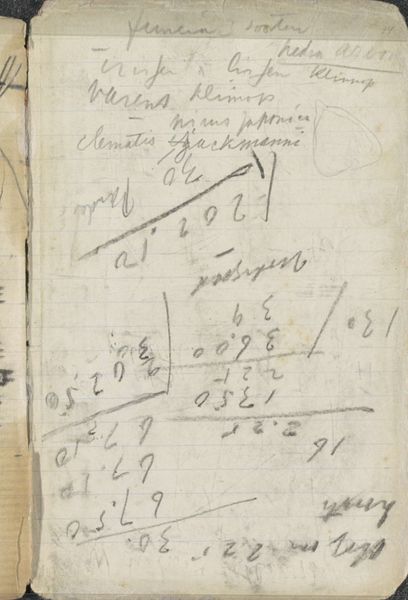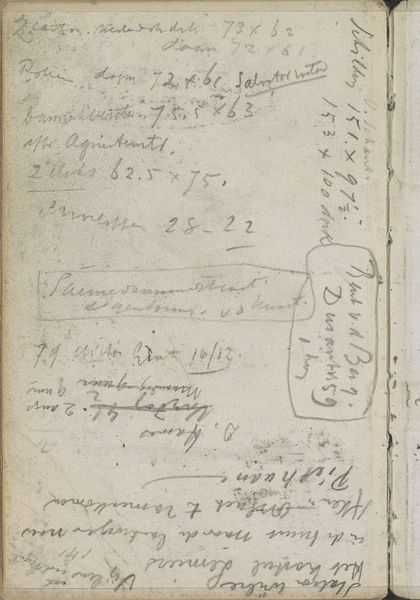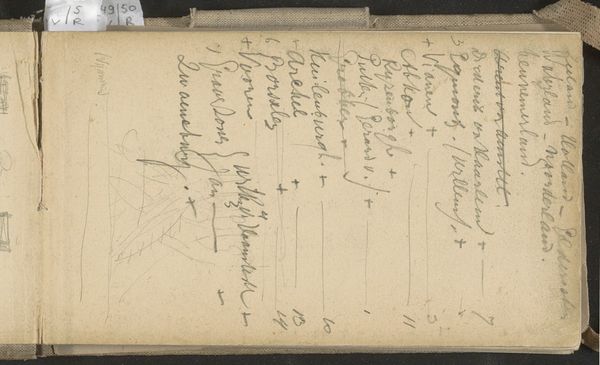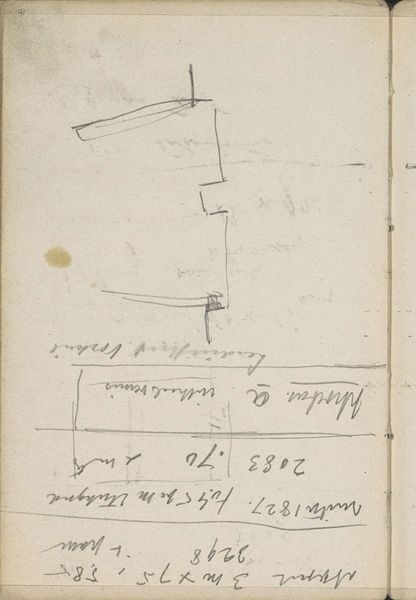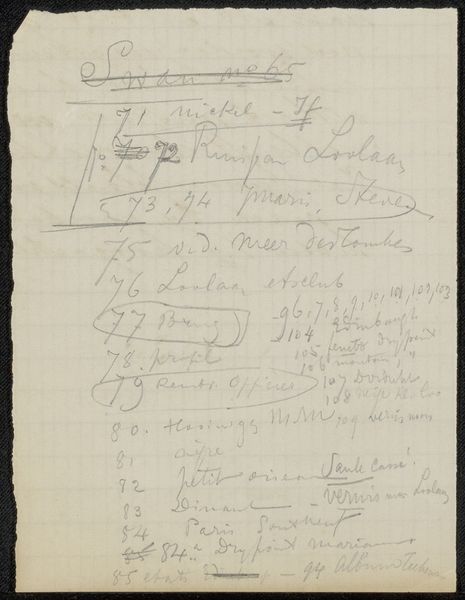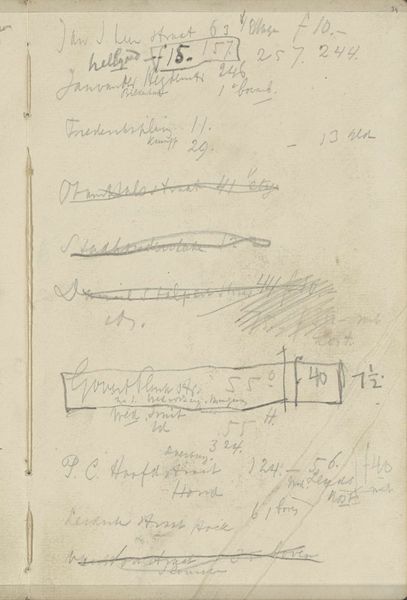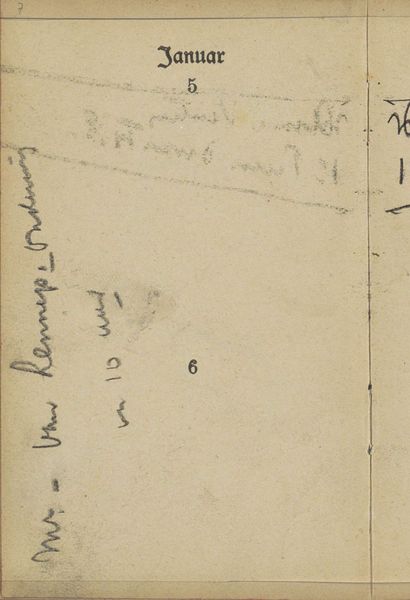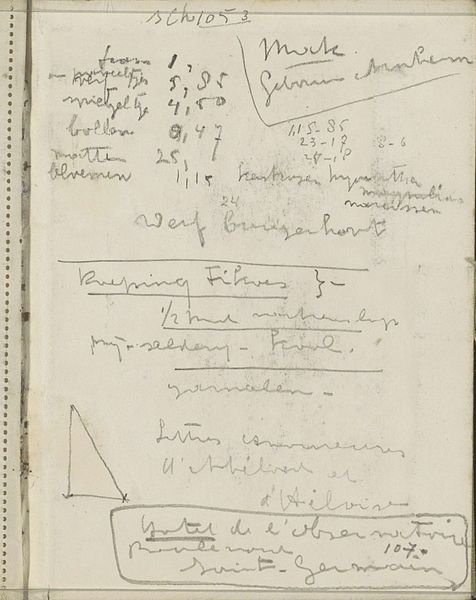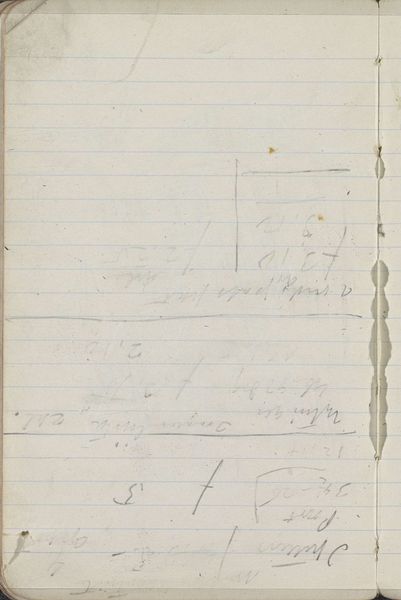
drawing, paper, pencil
#
drawing
#
hand written
#
art-nouveau
#
hand-lettering
#
hand drawn type
#
hand lettering
#
paper
#
form
#
personal sketchbook
#
hand-written
#
pencil
#
line
#
sketchbook drawing
#
handwritten font
#
sketchbook art
#
small lettering
Copyright: Rijks Museum: Open Domain
Curator: Welcome. We're looking at a drawing titled "Ontwerp voor een ornament met een liervogel," or "Design for an Ornament with a Lyrebird," dating from around 1906, by Carel Adolph Lion Cachet. It’s currently held in the Rijksmuseum collection. Editor: It has the feel of a casual sketchbook page—a glimpse into the artist's process. Scribbled calculations share space with the elegant curves of a lyrebird. The composition is very loose and informal. Curator: Indeed. Cachet was deeply engaged in the Dutch Arts and Crafts movement, Nieuwe Kunst. This drawing offers insight into the design principles favored at the time. The use of the lyrebird as a motif, combined with stylized lines, epitomizes the Art Nouveau aesthetic. Editor: Precisely, but is there any deeper cultural relevance? The almost hidden numbers and calculations... What story do these elements tell? Curator: Those numerical notations reveal Cachet's engagement in design costing, production planning and the material considerations shaping artistic ideas and creative possibility at the time. This points towards an economy influencing both his art and that of the wider society. Editor: The stark contrast between the rigid accounting and the fluid depiction of the bird is striking. This hints at the tension present in early twentieth century design circles as people attempted integrating traditional artisan work with then-burgeoning mass industrial production. Curator: Good point. Moreover, we must not reduce its symbolic weight simply to style—the motif also points toward larger sociopolitical themes. Consider Cachet’s South African heritage, this element lends a richness beyond aesthetics when looking from our current cultural historical vantage point. Editor: Yes, so this work moves past formalism to embody complex socio-cultural issues that were present in Cachet's art. Curator: Precisely. It beautifully illustrates how the language of forms intersects and converses with economic considerations within a singular artistic vision. Editor: Well, looking at it this way certainly shifts how one views it. Thanks!
Comments
No comments
Be the first to comment and join the conversation on the ultimate creative platform.
